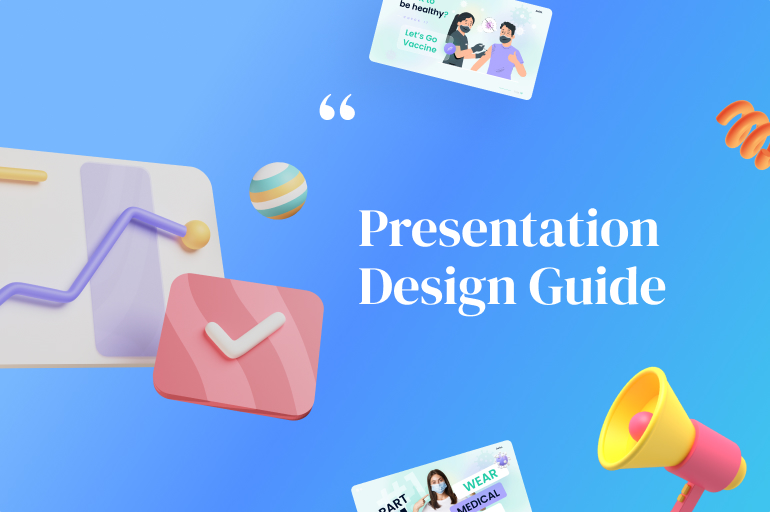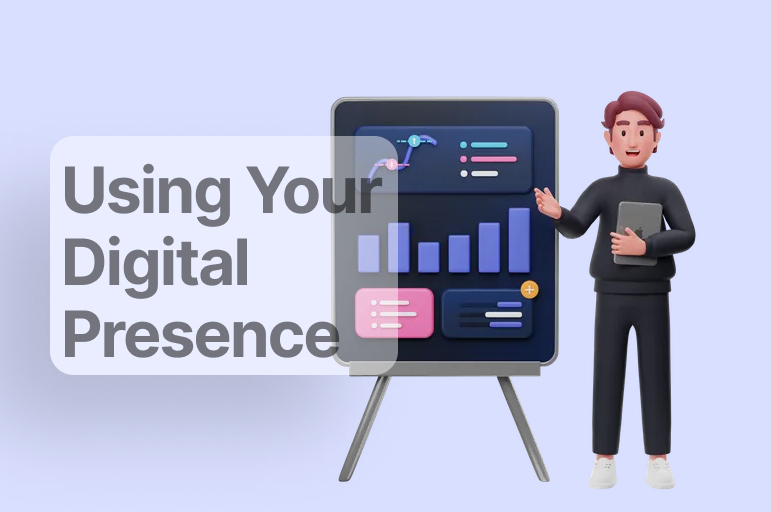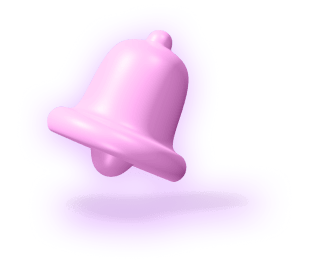Presentation Design Guide: How To Sum Up Information For Presentations
Perfectly done presentations are a great support to your business image. In addition, the quality of your slides and visual image can be a significant factor that can help you progress.
The basic rule of any good visual display is that those who listen to you must understand the message you want to convey. For that reason, your performance should be full of arguments that great slides will accompany.
Some general rules can make a miracle out of your presentation when applied. These rules apply to all types of productions.
Presentation Design Guide 1: Get to know your audience
One of the most important rules for preparing a good presentation is to get to know the audience as well as possible.
How to do it?
Ask about the structure of the audience before you accept to give a speech, about education, age, material status. So you can customize it to the audience.
On the other hand, you decide which audience feature is most important for your presentation to be well received. Finally, you determine who your target group is.
If you hold the same presentation multiple times, it is easiest to repeat it. However, although the audience is almost the same in structure, change something. People like that something is prepared just for them.
Presentation Design Guide 2: Be your own
No matter how you adapt the presentation and yourself to the audience, you still want to stay on your own. That’s how your audience will gain trust. The last thing you want to happen to you is that the audience listening to you doesn’t trust you.
How won’t they believe you?
If you try to be something you are not during the presentation, it can look like bad acting. Bad acting when you want to “sell” an idea leads to failure. That’s why you don’t want to look unnatural.
Two simple things can help you feel comfortable and confident. First, wear comfortable clothes and second, believe what you say.
Presentation Design Guide 3: Be an audience
The first step of any good presentation is to put yourself in the position of the audience. Then, make it just for yourself. The way you would like to see it, to be interesting to you.
If it’s not interesting to you, it won’t be to the audience that listens to it.
Presentation Design Guide 4: Practice
It’s simple. You don’t want to present your idea or your business for the first time before an audience. So practice beforehand. When you say it out loud for the first time, you will see if it still needs improvement. You can then realize you still need to work on it.
Do not memorize sentences or phrases. If you learn everything by heart and get confused, it will be harder to go back on track. Also, memorizing the sentences can hurt the audience. If you suffer from anxiety, learn the first sentences by heart because the rest of the presentation will flow smoothly.
Presentation Design Guide 5: Introduction elaborates a conclusion
The audience should know why they are there, where they are going, and now. It is the basis of any clear lecture, speech, and presentation. Therefore, you should have an introduction, elaboration, and conclusion.
You don’t want to confuse people who listen to you. So first, explain to them why they are there. Then, please give them a reason why the topic matters. Finally, explain what the goal of the speech is and how you will achieve it.
Then lay the foundation of the story. Finally, explain to the audience all the essentials of your idea. Only then proceed to the elaboration in which you explain how you concluded.
Finally, the essence of the whole story follows. Conclusion. The point of the entire story. Emphasize that part, in particular, to clarify that this is the essence of the presentation.
In the end, finish it gradually by summarizing everything you said.
Presentation Design Guide 6: Keywords
You should always know what the keywords of your topic are. During your presentation, a lot of information is shown. There are words, slides.
The audience remembers an excellent visual display and will be able to retell it tomorrow. After a week, the audience will remember only some parts of it. After a year, if the audience members manage to summarize your presentation in three words, you have succeeded.
So divide the slides into keywords. The easiest way to do this is to try to summarize the whole story in a few words. Then, when you decide on the right keywords, all you have to do is repeat them throughout the presentation.
Presentation Design Guide 7: Don’t overdo it
Even if you put in a lot of effort, don’t overdo it with information. It is enough for the audience to get a general picture of the idea you are presenting and remember its essence.
Leave everything that is not the most important, and you want to say for the end in the auxiliary slides. Don’t overdo it with the number of slides, either. The rule is one slide per minute.
Also, pay attention to the text. Too much text on a single slide is hard to keep track of.
Presentation Design Guide 8: Follow the audience
Look at the audience during the presentation. That will make you more convincing. You will be more accessible and open, and the audience who listens to you will trust you more. That’s how your performance will be more successful.
Presentation Design Guide 9: Time
It is crucial to know that the audience is most annoyed when the one talking exaggerates with time. The presentation can be brilliant, but if it lasts too long, the audience will be angry, which is the last thing you want.
It will help if you respect your time, as well as the time of the people who listen to you.
Presentation Design Guide 10
Here, we will show you more tips on how to make a presentation in an easy way.
a. Beginning of the presentation
It is imperative to establish a logical flow of the presentation.
1. The first slide should contain the title of the topic you will talk about and your name and surname.
2. The following slide should show the content. All the following should follow the items from the range.
It should not be allowed to turn into a series of slides with lists, text, tables, and pictures. Instead, turn everything into a story with flow and action.
b. Text
There should be a maximum of 4 or 5 points on one slide.
1. You lose your audience with too much text. The slides will seem messy, and the audience will focus on reading the text rather than listening to what you are saying.
2. Instead of whole sentences, the text should only be in the theses to set you up for talking about.
3. Do not write whole paragraphs or sentences.
If you need definitions, they should be in quotations or only the most essential parts.
c. Font
The audience will not be able to read small fonts and will get tired.
1. Therefore, the minimum font size recommended is 18 pt, while the most appropriate is 24 pt or larger.
2. Take care of the size of the room in which you make the presentation. The text should be legible and clear to the people sitting in the back.
3. Use a font size of 40 or 44 pt for the title.
4. If you have a sub-thesis, it should be a smaller font than the thesis itself.
5. Use fonts like Arial, Times New Roman, or Verdana because if you use non-standard fonts, there is a possibility that they will not be on the computer on which you are playing the presentation, and your text will come out in strange symbols or little squares.
6. Always use only one font type. Writing in different fonts can seem unprofessional.
7. Do not use decorative fonts.
8. Use bold when you want to highlight the most crucial information.
If you can avoid capitalization, avoid it. Otherwise, the audience will think you are shouting at them.
d. The color
The color of the letters should be in contrast with the background you are using.
1. When you want to emphasize something, use a different color of the text.
2. Don’t express your creativity in font colors.
Too many different colors tire and distract the audience.
e. Charts
Show all the data from the tables in graphs. It is because they are easier to remember, more transparent, and more understandable.
1. All charts must have a title.
2. The chart must be large enough for everyone to read them easily.
Many people have trouble preparing a high-quality informative, brief, and visually pleasant presentation on their own. You can, of course, order it from a specialized service – TrustMyPaper is a great example – or search online for tips and techniques that will allow you to become a stellar presentation maker yourself.
f. Images
People remember visual information longer than a written one.
1. A good slide has efficiently arranged images and text.
2. A small picture in the corner makes no sense.
3. Do not use low-resolution images.
4. Don’t use images just for decoration.
Therefore images can be used to visualize information. The image must be in line with the theme and message that the presentation carries.
g. Animations
Always use only one type of transition between slides.
1. Take care of the animation speed.
2. Avoid sound effects.
3. Carefully evaluate when the animation will go automatically and when by clicking the mouse.
4. Don’t overdo it with animations.
Carefully choose the animations you will use as they can be distracting.
h. Slide Design
Use simple backgrounds. You can download many free templates.
1. Always use the same background.
2. Don’t use too many colorful backgrounds.
3. Do not use backgrounds on which the text will be difficult to read.
If you did decide to outsource your presentation creation to SupremeDissertations or another service, you could save your efforts. But if not, we hope that this guide will be of use to you.
i. End of the presentation
Always conclude at the end of the presentation.
1. Leave your contact information on the last slide.
2. Record your slides on different versions of PowerPoint and always carry them on multiple other memory sticks.
Always come a little early. So you will have time to try out your presentation and set up all the necessary techniques.
See also
PowerPoint Design Tips, Tricks, and Ideas for Beginners
A presentation design guide may help you a lot in preparing a good pitch
Let’s visit RRSlide to download free PowerPoint presentation templates with many categories. But wait, don’t go anywhere and stay here with our Blog to keep up-to-date on all the best pitch deck template collections and design advice from our PowerPoint experts yet to come!

Nina Petrov is a content writer, passionate about graphic design, content marketing, and the new generation of green and social businesses. She starts the day scrolling her digest on recent digital trends while sipping a cup of coffee with milk and sugar. Her little white bunny tends to reply to your emails when she is on vacation. Let’s keep in touch with her 👉🏻 LinkedIn





